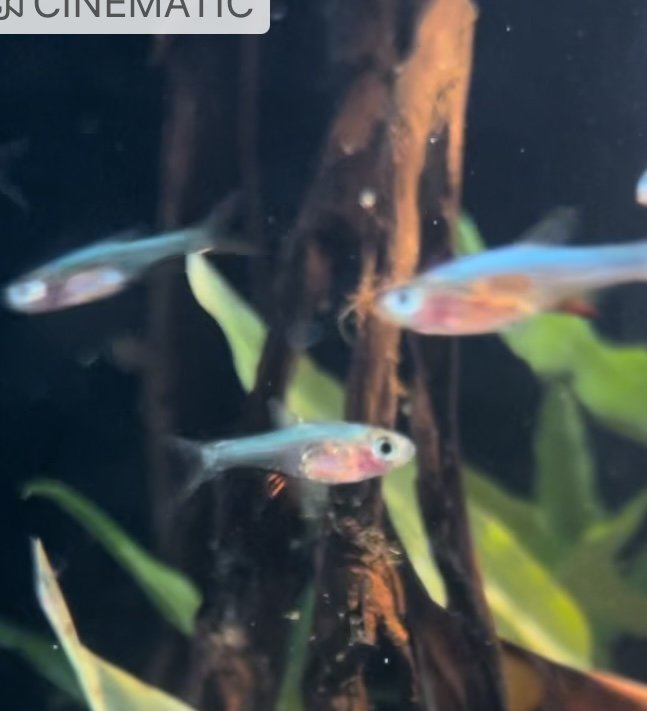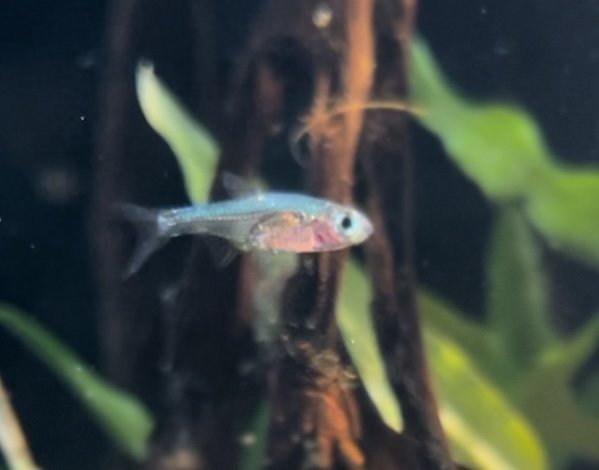 Image 1 of
Image 1 of


Melon Barb
The Melon Barb, scientifically known as Haludaria fasciata, is a vibrant freshwater fish species native to South Asia, particularly found in slow-moving waters, streams, and rivers in India, Bangladesh, and Myanmar. Known for its distinctive coloration and active behavior, the Melon Barb is a popular choice for community aquariums.
Physically, Melon Barbs are characterized by their elongated and laterally compressed bodies, displaying a captivating melon-orange to reddish coloration. They have a series of black bands along their body, adding to their attractive appearance. They typically grow to a size of around 2 to 2.5 inches (5-6.4 cm).
In their natural habitat, Melon Barbs thrive in well-planted aquariums with areas for swimming and hiding spots provided by plants, driftwood, and rocks. They prefer soft to slightly hard water conditions, and maintaining a stable and clean environment with proper filtration contributes to their overall well-being.
Known for their peaceful and social nature, Melon Barbs are suitable for community aquariums. They should be kept in groups of at least five or more individuals to encourage their natural schooling behavior. They generally get along well with other peaceful species.
A well-balanced diet, including high-quality flakes, pellets, and occasional live or frozen foods, meets their nutritional needs. Melon Barbs are omnivores, and their diet can include a mix of both plant and animal-based foods.
Maintaining water conditions within the range of 72-79°F (22-26°C) and a pH level between 6.0 to 7.5 is advisable. Regular water changes and proper filtration contribute to their health and vitality.
Breeding Melon Barbs in captivity is achievable. Creating a separate breeding tank with soft, acidic water, providing spawning sites with fine-leaved plants or spawning mops, and a well-balanced diet can encourage successful reproduction.
In summary, the Melon Barb is a colorful and active addition to freshwater aquariums, known for its vibrant hues and social behavior. Recreating their natural habitat from South Asia and adhering to proper care conditions contribute to their well-being in captivity.
The Melon Barb, scientifically known as Haludaria fasciata, is a vibrant freshwater fish species native to South Asia, particularly found in slow-moving waters, streams, and rivers in India, Bangladesh, and Myanmar. Known for its distinctive coloration and active behavior, the Melon Barb is a popular choice for community aquariums.
Physically, Melon Barbs are characterized by their elongated and laterally compressed bodies, displaying a captivating melon-orange to reddish coloration. They have a series of black bands along their body, adding to their attractive appearance. They typically grow to a size of around 2 to 2.5 inches (5-6.4 cm).
In their natural habitat, Melon Barbs thrive in well-planted aquariums with areas for swimming and hiding spots provided by plants, driftwood, and rocks. They prefer soft to slightly hard water conditions, and maintaining a stable and clean environment with proper filtration contributes to their overall well-being.
Known for their peaceful and social nature, Melon Barbs are suitable for community aquariums. They should be kept in groups of at least five or more individuals to encourage their natural schooling behavior. They generally get along well with other peaceful species.
A well-balanced diet, including high-quality flakes, pellets, and occasional live or frozen foods, meets their nutritional needs. Melon Barbs are omnivores, and their diet can include a mix of both plant and animal-based foods.
Maintaining water conditions within the range of 72-79°F (22-26°C) and a pH level between 6.0 to 7.5 is advisable. Regular water changes and proper filtration contribute to their health and vitality.
Breeding Melon Barbs in captivity is achievable. Creating a separate breeding tank with soft, acidic water, providing spawning sites with fine-leaved plants or spawning mops, and a well-balanced diet can encourage successful reproduction.
In summary, the Melon Barb is a colorful and active addition to freshwater aquariums, known for its vibrant hues and social behavior. Recreating their natural habitat from South Asia and adhering to proper care conditions contribute to their well-being in captivity.
The Melon Barb, scientifically known as Haludaria fasciata, is a vibrant freshwater fish species native to South Asia, particularly found in slow-moving waters, streams, and rivers in India, Bangladesh, and Myanmar. Known for its distinctive coloration and active behavior, the Melon Barb is a popular choice for community aquariums.
Physically, Melon Barbs are characterized by their elongated and laterally compressed bodies, displaying a captivating melon-orange to reddish coloration. They have a series of black bands along their body, adding to their attractive appearance. They typically grow to a size of around 2 to 2.5 inches (5-6.4 cm).
In their natural habitat, Melon Barbs thrive in well-planted aquariums with areas for swimming and hiding spots provided by plants, driftwood, and rocks. They prefer soft to slightly hard water conditions, and maintaining a stable and clean environment with proper filtration contributes to their overall well-being.
Known for their peaceful and social nature, Melon Barbs are suitable for community aquariums. They should be kept in groups of at least five or more individuals to encourage their natural schooling behavior. They generally get along well with other peaceful species.
A well-balanced diet, including high-quality flakes, pellets, and occasional live or frozen foods, meets their nutritional needs. Melon Barbs are omnivores, and their diet can include a mix of both plant and animal-based foods.
Maintaining water conditions within the range of 72-79°F (22-26°C) and a pH level between 6.0 to 7.5 is advisable. Regular water changes and proper filtration contribute to their health and vitality.
Breeding Melon Barbs in captivity is achievable. Creating a separate breeding tank with soft, acidic water, providing spawning sites with fine-leaved plants or spawning mops, and a well-balanced diet can encourage successful reproduction.
In summary, the Melon Barb is a colorful and active addition to freshwater aquariums, known for its vibrant hues and social behavior. Recreating their natural habitat from South Asia and adhering to proper care conditions contribute to their well-being in captivity.







